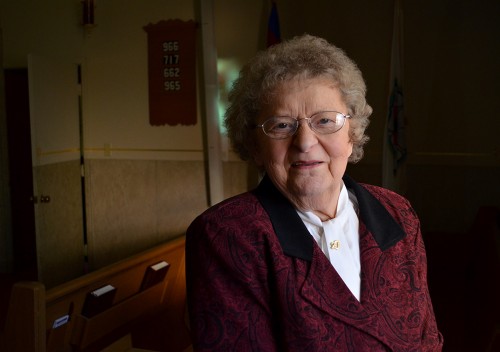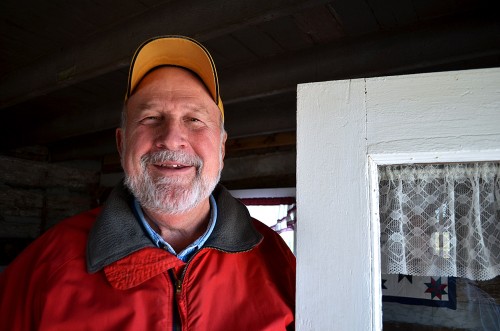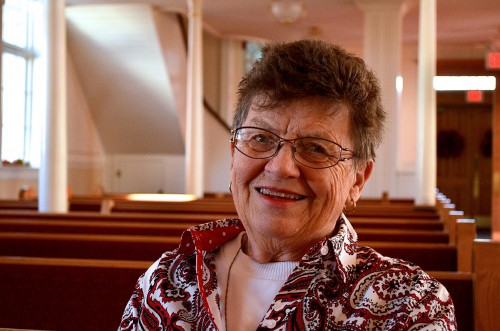 I’ve been working on The Last Generation off and on for about two years. It tells the story of the last generation of the original East Perry County pioneer families who spoke German as their primary language. I’ve had an opportunity to meet interesting men and women who grew up in an era before electricity; when little girls died of “winter fever” and telephones were just arriving.
I’ve been working on The Last Generation off and on for about two years. It tells the story of the last generation of the original East Perry County pioneer families who spoke German as their primary language. I’ve had an opportunity to meet interesting men and women who grew up in an era before electricity; when little girls died of “winter fever” and telephones were just arriving.
The challenge has been to edit the videos and recordings down to a workable length. I have more material than I can use, and I was planning on interviewing some more people when I go back to SE Missouri next week. It’s been a race against the clock. Several of my subjects have died since the project started. Here are three of my friends.
Myrtle Schilling Kuehnert
Myrtle Schilling Kuehnert, above, met her future husband at Altenburg’s Trinity Lutheran Church when she was 13. She said he would have to ask her father for permission to ask her out after an evening church service. Her father told him she had to be back home by midnight because she had to help him milk cows at 4:30 a..m. She said they went uptown to a tavern where they played the jukebox and each drank a beer.
“AT 13!?!?” I exclaimed.
“Well, there weren’t any restrictions at that time.”
She wrote “Ernie” close to a thousand letters while he was serving as a turret gunner in the Pacific during World War II. She has all his letters, but he had to, “with a heavy heart,” throw her letters overboard when the ship had be be lightened during a storm.
Edgar Dreyer walked 4 miles to school
 “Uphill each way. In the snow,” he said.
“Uphill each way. In the snow,” he said.
Edgar Dryer is a great and funny storyteller, but he grows solemn when he talks about his sister, Irene, who died when she was 13 years old, on his 4th birthday. He still remembers her coffin being brought into the living room or “die gute Stube,” and the strain it placed on his family. “She died of ‘winter fever.’ It’s pneumonia these days.”
He went to school until the tenth grade, then his father said, “Son, now you have to go to work.”
Electricity was a big thing
 Dorothy Weinhold – and several of the other subjects – said that electricity was the biggest change they remember in their lifetimes. Her mother actually bought an electric iron before the house was wired for power because she was tired of firing up the wood stove to heat the old flatiron.
Dorothy Weinhold – and several of the other subjects – said that electricity was the biggest change they remember in their lifetimes. Her mother actually bought an electric iron before the house was wired for power because she was tired of firing up the wood stove to heat the old flatiron.
After she said their bathroom was outdoors, I asked, “Sears and Roebuck catalog or corncobs?”
She laughed and said, “I remember the Sears and Roebuck catalog.” Pausing, she added, “but I’ve heard about the corncobs.”
Presentation and exhibit in the fall
I’ll show the videos and exhibit prints from the project at the Perry County Lutheran Historical Society’s Third Biennial Immigration History Conference in Altenburg October 23-25.

I love to hear these stories, but I am afraid that if more people do not document as you are doing then they are going to be lost forever. I want to thank you again Ken for doing what you do.
Jodi, I’m not doing anything that anyone couldn’t do. Grab a video camera or a recorder and just sit down with folks and encourage them to talk.
Some folks need prompting and questions. Some seem to have their stories all queued up and they are waiting for someone to push the button. I also have the sense that they are more comfortable telling their stories to a stranger than someone they know.
This is a wonderful and ambitious project, Ken! You make me feel guilty for not following your example… There are so many similar stories in any given area, and the people are dying away without leaving their experience behind.
Juanita Holder is gathering up the stories from Tillman, Mo. and committing them to paper, transcribing the interviews captured by her daughter’s history project several years ago.
Gayle Cantrell’s 5th grade class did a huge project, involving videoed interviews and a large model of Tillman. The model was housed in the old Pleasant Hill Church for several years, but I think it’s fallen apart… (the project–not the church)
Madeline, All you have to do is do it. Don’t wait.
It’s better to capture it and not do anything with it than it is to not capture it at all.
Stuff that I captured half a century ago that I thought had a lifespan of 24 hours has suddenly become important to people.